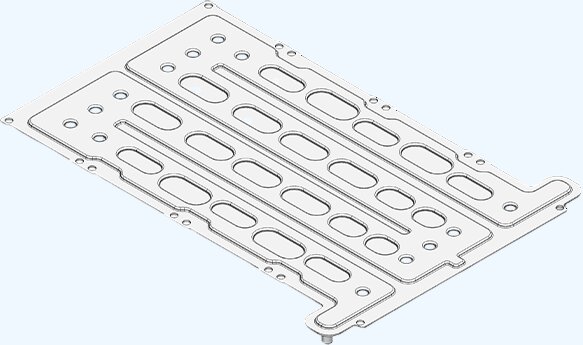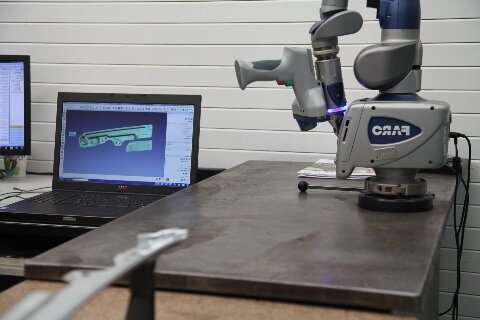모든 엔지니어와 구매 관리자는 도면은 완벽하고 견적은 괜찮아 보이지만 부품이 늦게 도착하거나 사양에 맞지 않는 경우를 알고 있습니다. 대부분의 경우 문제는 기계가 아니라 공급업체에 있습니다.
신뢰할 수 있는 제조 파트너는 제품 일관성을 개선하고 리드 타임을 단축하며 장기적인 비용을 안정화할 수 있습니다. 그러나 제조 지연의 70% 이상은 잘못된 커뮤니케이션, 불명확한 사양, 역량 불일치 등 공급업체 측의 문제에서 비롯됩니다.
신뢰성은 배송에서 시작되지 않습니다. 무엇을 물어보고, 무엇을 확인하고, 어떤 증거를 요청해야 하는지 정확히 파악하는 준비에서 시작됩니다.
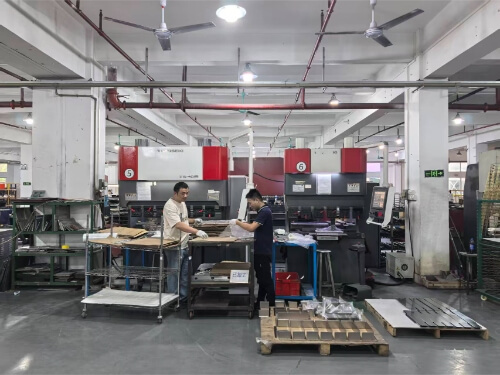
1. 프로젝트 요구 사항을 명확하게 정의하기
전체 기술 개요로 시작하기
많은 구매자가 불완전한 도면이나 불명확한 목표를 가지고 너무 일찍 견적을 요청합니다. 이로 인해 잘못된 가정, 일관성 없는 가격 책정 또는 나중에 많은 비용이 드는 재설계가 발생하기도 합니다.
공급업체에 연락하기 전에 다음과 같은 내용이 포함된 자세한 개요를 준비하세요:
- 재료 유형 및 두께 (예: 스테인리스 스틸 304, 1.5mm)
- 표면 마감 요구 사항(예: 브러시 처리, 아노다이징, 파우더 코팅)
- 허용 오차 및 적합성 (일반 부품의 경우 ±0.1mm, 조립품의 경우 더 엄격함)
- 생산 규모 - 프로토타입, 브리지 생산 또는 본격적인 제조
- 포장, 라벨링 및 검사 요구 사항
재료 두께나 마감의 작은 변화도 굽힘 반경, 툴링 힘, 부품당 비용에 영향을 미칠 수 있습니다. 요구 사항을 명확하게 정의하면 엔지니어가 정확하게 견적을 내고 제조 가능성 위험을 조기에 파악하기가 쉬워집니다.
즉시 사용 가능한 CAD 모델 제공
신뢰할 수 있는 공급업체는 깔끔하고 상세한 도면으로 작업하는 것을 선호합니다. 가능하면 굽힘선, 구멍 치수, 메모 및 3D 모델을 포함하세요.
디지털 견적 시스템은 제조 가능성 문제를 자동으로 감지하여 검토 시간을 며칠에서 몇 시간으로 단축할 수 있습니다.
전문가 팁: 선명한 3D 모델은 견적 시간을 최대 60%까지 단축하고 생산 후반의 설계 수정 작업을 줄여줍니다.
한눈에 보기: 주요 내용 요약
- 견적을 요청하기 전에 재료, 공차 및 마감을 정의하세요.
- 생산 단계(프로토타입 또는 대량 생산)를 명확히 합니다.
- 완전한 CAD 데이터를 공유하면 정확성과 속도가 향상됩니다.
2. 제조 역량 및 장비 평가
요구 사항에 맞게 기능 일치
프로젝트가 정의되면 공급업체가 실제로 이러한 요구 사항을 충족할 수 있는지 검증하는 데 집중하세요. 신뢰할 수 있는 제작업체는 완전한 프로세스 체인을 운영해야 합니다:
- 레이저 절단 그리고 CNC 펀칭
- 프레스 브레이크 성형 및 벤딩
- TIG/MIG 용접 및 연삭
- 표면 마감 및 코팅
- 조립 및 검사
소재 범위와 두께 제한을 문의하세요. 예를 들어, 대부분의 중형 공장은 0.5mm에서 6mm까지 효율적으로 처리하며, 그 이상 두께는 특수 툴링이나 프레스 톤수가 필요할 수 있습니다.
정밀도 및 프로세스 제어 확인
자동화도 중요하지만 경험도 그에 못지않게 중요합니다. 실시간 각도 보정, 자동 공구 교환장치 또는 디지털 백 게이지를 갖춘 CNC 프레스 브레이크를 갖춘 공급업체를 찾아보세요.
이러한 툴은 배치 간 일관성을 보장하지만, 열, 스프링백 및 재료 거동을 관리하려면 숙련된 작업자가 필수적입니다.
가능하면 디자인과 유사한 샘플 부품이나 프로젝트 사진을 요청하세요. 가장자리 품질, 용접 마감, 코팅 균일성 등을 검사하면 공급업체의 실제 생산 표준을 파악할 수 있습니다.
전문가 팁: 신뢰할 수 있는 공급업체는 일반적으로 프로세스 허용 오차를 문서화합니다:
- 레이저 절단: ±0.2mm
- 굽힘: ±1°
- 용접: ±0.5mm 정렬
이러한 벤치마크를 요청하면 내부 정확도 수준을 검증하는 데 도움이 됩니다.
한눈에 보기: 주요 내용 요약
- 공급업체의 역량을 재료 및 디자인 요구사항과 일치시키세요.
- 샘플 작업의 용접, 코팅 및 가장자리 품질을 검사합니다.
- 첨단 기계 + 숙련된 기술자 = 일관된 결과물.
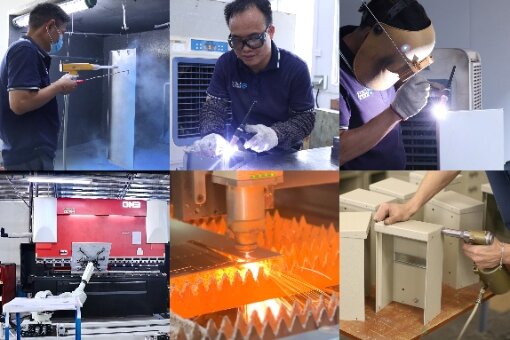
3. 품질 시스템 및 인증 검토
체계적인 품질 관리 확인
품질 관리는 신뢰할 수 있는 공급업체와 그렇지 않은 공급업체를 구분합니다. ISO 9001, ISO 14001 또는 IATF 16949와 같은 표준을 찾아보세요. 인증이 없어도 성숙한 공급업체는 세부적인 품질 워크플로를 유지합니다:
- 입고 자재 검사
- 첫 번째 기사 검증(FAI)
- 진행 중인 검사
- 문서를 통한 최종 점검
샘플 검사 보고서 사본을 요청하세요. 여기에는 측정 도구, 보정 기록, 작업자 서명 등이 포함되어야 합니다. 신뢰할 수 있는 공급업체는 종종 반복성을 보장하기 위해 CMM 또는 레이저 스캐너를 사용합니다.
조기 검사로 시간과 비용 절감
제조 감사에 따르면 첫 번째 공정 단계에서 오류를 감지하면 재작업을 30~40%까지 줄일 수 있습니다. 검사를 최종 단계로 취급하지 않고 생산에 통합하는 공급업체는 장기적으로 훨씬 더 신뢰할 수 있습니다.
전문가 팁: 검사 시기를 물어보세요. 제작 중인가요, 아니면 제작 이후인가요? 조기 발견은 실제 프로세스 규율을 반영합니다.
한눈에 보기: 주요 내용 요약
- ISO 인증 또는 체계적인 품질 검사를 확인합니다.
- 투명성을 위해 샘플 검사 보고서를 검토하세요.
- 조기 검사를 통해 재작업을 줄이고 안정성을 개선하세요.
4. 엔지니어링 지원 및 DFM 협업 평가
함께 엔지니어링하는 파트너 선택
강력한 공급업체는 단순히 도면을 따르는 것이 아니라 도면을 개선합니다. 생산 전에 신뢰할 수 있는 제작업체가 설계의 제조 가능성(DFM)을 검토합니다. 이들은 플랜지 간격이 좁거나 굽힘 반경이 작거나 가장자리 근처에 구멍이 있는 등의 잠재적인 문제를 지적합니다.
엔지니어와 엔지니어 간의 직접적인 커뮤니케이션을 통해 지연과 오해를 피할 수 있습니다. 사내에 영어를 구사하는 엔지니어가 있는 공급업체는 일반적으로 24~48시간 이내에 설계 피드백을 제공합니다. 이러한 조기 협업은 폐기 및 재설계를 방지하여 시간과 비용을 절약합니다.
응답성 및 전문성 측정
200개가 넘는 맞춤형 판금 프로젝트를 대상으로 한 연구에서 초기 DFM 피드백은 설계 관련 오류를 40% 감소시키고 생산 기간을 평균 3일 단축했습니다.
결함이 있는 설계를 조용히 실행하는 것이 아니라 적극적으로 개선을 제안하는 공급업체는 진정한 기술 성숙도를 보여줍니다.
전문가 팁: 신뢰할 수 있는 제작자는 생산 전에 불명확한 세부 사항에 대해 질문합니다. 소극적인 동의는 위험 신호이며 적극적인 커뮤니케이션은 전문성을 나타냅니다.
한눈에 보기: 주요 내용 요약
- DFM 피드백을 조기에 제공할 수 있는 공급업체를 찾아보세요.
- 엔지니어가 중개자를 통하지 않고 직접 소통할 수 있도록 하세요.
- 디자인 단계에서의 협업은 나중에 비용이 많이 드는 실수를 방지합니다.
5. 커뮤니케이션 및 프로젝트 관리 평가
명확한 커뮤니케이션이 신뢰성을 정의합니다
공급업체에 쉽게 연락하고, 구체적인 답변을 얻고, 프로젝트의 각 단계를 누가 소유하고 있는지 알 수 있어야 합니다. 느린 응답이나 모호한 메시지는 종종 내부의 혼란을 나타냅니다.
워크플로우가 어떻게 구성되어 있는지 물어보세요. 신뢰할 수 있는 제조업체는 일반적으로 전담 프로젝트 엔지니어 또는 계정 관리자를 배정하여 RFQ부터 배송까지 주문을 추적합니다. 이러한 단일 연락 창구를 통해 설계, 생산 및 품질 팀 간의 일관성을 보장합니다.
전문가 팁: 24시간 대응 정책과 선제적인 상태 업데이트는 잘 조직된 공급업체의 좋은 신호입니다.
여러 시간대에 걸친 프로젝트 관리
해외 협력의 경우 언어와 시차 때문에 진행 속도가 느려질 수 있습니다. 공급업체에 영어를 유창하게 구사하는 엔지니어가 있는지, 여러분의 근무 시간과 겹치는 커뮤니케이션 일정이 정해져 있는지 확인하세요.
10시간 간격이라면 다음 날 업데이트를 제공하는지 또는 온라인 미팅 시간이 겹치는지 확인하세요. 해외 고객이 있는 신뢰할 수 있는 공장은 일반적으로 명확성을 보장하기 위해 영어 보고 템플릿과 커뮤니케이션 표준을 유지합니다.
프로젝트 추적을 위한 디지털 도구
현대의 공급업체는 ERP(전사적 자원 관리) 또는 MES(제조 실행 시스템) 소프트웨어를 사용하여 프로젝트 상태를 실시간으로 추적하는 경우가 많습니다. 자재 도착, 생산 시작, 검사 및 배송과 같은 주요 마일스톤에서 업데이트를 받을 수 있어야 합니다.
투명성은 신뢰를 구축합니다. 이를 통해 돌발 상황을 줄이면서 조립, 물류 및 다운스트림 작업을 계획할 수 있습니다. 공급업체가 진행 상황에 대한 가시성을 제공하지 못한다면 이는 종종 경고 신호입니다.
한눈에 보기: 주요 내용 요약
- 프로젝트 소유권 및 주 연락 담당자에 대해 문의하세요.
- 시간대별 통신 범위를 확인합니다.
- 마일스톤 업데이트 또는 가시성을 위한 대시보드 액세스를 기대하세요.
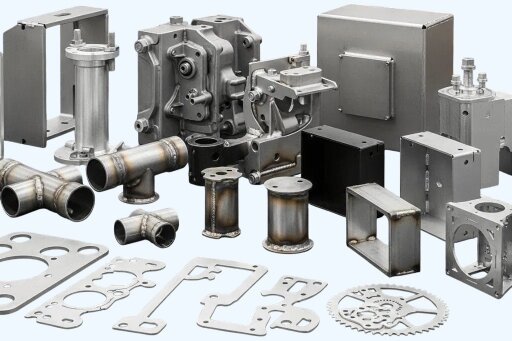
6. 배송 성능 및 물류 역량 확인
정시 배송 및 리드 타임 측정
배송 신뢰성은 가장 쉽게 확인할 수 있는 지표 중 하나입니다. 정시 배송률이 95% 이상인 공장은 일반적으로 체계적인 스케줄링과 자재 관리가 이루어지고 있습니다.
일반적인 리드 타임을 문의하세요:
- 프로토타입: 영업일 기준 5~7일
- 프로덕션 실행: 영업일 기준 15~25일
신뢰할 수 있는 공급업체는 신중하게 용량을 계획하고 현실적인 일정을 약속합니다. 맥락 없이 "모든 것을 빨리 처리하겠다"고 약속한다면 이는 위험 신호일 수 있습니다.
전문가 팁: 과거 정시 배송 데이터 또는 몇 가지 실제 배송 기록을 요청하세요. 신뢰할 수 있는 공급업체는 숫자로 투명합니다.
포장 및 배송 품질
부품이 공장에서 출고된다고 해서 배송이 끝나는 것은 아닙니다. 적절한 포장은 부품이 완벽한 상태로 도착할 수 있도록 보장합니다. 수출 배송에 폼 보호, 방청 필름, 건조제 또는 강화 상자를 사용하는지 확인합니다.
이전 주문의 포장 및 라벨링 사진을 요청하세요. 이렇게 하면 장거리 운송 및 세관 검사 시 부품이 안전하게 보호되는지 확인할 수 있습니다.
수출 및 통관 경험
해외 배송에는 물류 이상의 것이 필요합니다. 서류 작업의 정확성이 요구됩니다. 공급업체가 인코텀즈(EXW, FOB, CIF), 세관 문서 및 수출 규정 준수를 이해하고 있는지 확인합니다.
제공할 수 있어야 합니다:
- 정답 HS 코드
- 상업 송장 그리고 포장 목록
- 원산지 증명서 (필요한 경우)
잘못된 HS 코드와 같은 사소한 서류 오류로 인해 통관이 최대 7~10일 지연될 수 있습니다. 숙련된 수출업체는 발송 전에 항상 배송 서류를 다시 한 번 확인합니다.
한눈에 보기: 주요 내용 요약
- 신뢰할 수 있는 공급업체는 최소 95%의 정시율을 유지합니다.
- 배송 전에 포장 품질을 검토합니다.
- 수출 지식, HS 코드 및 서류 작업의 정확성을 확인합니다.
7. 평판 및 고객 추천 확인
실적 확인
평판은 신뢰성을 나타내는 가장 강력한 지표 중 하나입니다. 프로젝트와 유사한 사례 연구, 장기 고객 또는 업계 레퍼런스를 요청하세요. 수년간 관계를 유지하는 공급업체는 일반적으로 일관된 품질과 서비스를 제공합니다.
또한 전자, 의료, 산업용 인클로저 등 해당 업종에 대한 경험이 있는지 확인하세요. 각 산업에는 특정 허용 오차, 표면 관리 및 문서 표준이 필요합니다.
전문가 팁: 성능에 자신 있는 공장에서는 참조 확인을 위해 기존 고객과 기꺼이 연결해 드립니다.
리뷰 평가 및 투명성
온라인 리뷰나 B2B 플랫폼 피드백을 살펴보세요. 단순히 평점을 확인하는 데 그치지 말고 문제에 대한 대응 방식을 읽어보세요. 전문적이고 투명한 대응은 책임감을 보여줍니다. 침묵이나 방어적인 태도는 불안정한 신호일 수 있습니다.
가능하다면 공장 방문 또는 가상 투어 일정을 잡으세요. 작업 현장의 조직, 도구 관리 및 검사 스테이션을 관찰하세요. 잘 정돈된 작업 공간은 종종 체계적인 관리를 반영합니다.
한눈에 보기: 주요 내용 요약
- 실제 고객 참조 또는 반복 주문 사례를 요청하세요.
- 리뷰와 답글을 통해 전문성을 평가하세요.
- 가능하면 작업장을 방문하거나 가상으로 점검하세요.
8. 글로벌 신뢰성 요소 고려
재무 안정성 및 소싱 복원력 확인
공급업체는 완벽한 기계를 보유하고 있지만 원자재 가격이 급등하거나 배송 경로가 변경되면 여전히 실패할 수 있습니다. 통화 거래, 보험, 원자재 구매를 어떻게 관리하는지 물어보세요. 재정적으로 안정적인 제조업체는 철강이나 알루미늄 가격이 변동하더라도 생산 일정을 유지할 수 있습니다.
신뢰할 수 있는 공급업체는 탄력적인 공급망도 구축합니다. 일반적으로 사용되는 시트의 안전 재고를 보유하고 있는지, 중요 자재에 대해 여러 인증된 공급업체를 보유하고 있는지 확인합니다. 다각화된 소싱을 갖춘 공장은 항만 혼잡이나 자재 부족과 같은 글로벌 중단 상황에서 최대 40%까지 더 빠르게 복구합니다.
전문가 팁: 공급업체에 자재 또는 화물 운송 중단에 대한 위험 계획이 있는지 물어보세요. 명확한 답변은 운영 성숙도를 나타냅니다.
내보내기 및 문서화 기능 확인
국제 제작에서 문서 정확성은 절단 정밀도만큼이나 중요합니다. 서명 누락이나 잘못된 HS 코드와 같은 사소한 실수로 인해 통관이 7~10일 정도 지연될 수 있습니다.
공급업체가 이에 대해 잘 알고 있는지 물어보세요:
- 인코텀즈(EXW, FOB, CIF)
- 세관 신고 및 포장 목록
- 원산지 증명서 및 상업 송장
신뢰할 수 있는 수출업체는 선적 전에 모든 서류를 재확인하고 디지털 사본을 미리 제공합니다. 공급업체가 수출 서류에 대해 논의할 때 주저한다면 이는 위험 신호입니다.
한눈에 보기: 주요 내용 요약
- 재정적 안정성은 원활한 장기 협력을 보장합니다.
- 다양한 소싱 옵션을 통해 자재 지연을 방지할 수 있습니다.
- 정확한 수출 서류 작업으로 프로젝트가 국경을 넘나들며 진행됩니다.
9. 가격 이상의 견적 비교
비용뿐 아니라 진정한 가치 평가
낮은 견적은 매력적으로 보일 수 있지만 검사, 마감 또는 포장과 같은 누락된 요소가 숨겨져 있을 수 있습니다. 공급업체를 비교할 때는 가격에 무엇이 포함되어 있는지 정확히 확인하세요:
- 표면 마무리
- 검사 보고서
- 포장 및 물류 준비
10-15%의 가격 차이는 순수한 비용 차이보다는 포함된 서비스를 반영하는 경우가 많습니다.
전송 및 일관성 지표 살펴보기
리드 타임이 짧아지면 제품 출시를 앞당기거나 다운타임을 줄임으로써 약간 높은 가격을 상쇄할 수 있습니다. 마찬가지로 엄격한 프로세스 관리를 갖춘 공급업체는 내부 검사 작업량과 재고 위험을 줄이는 데 도움이 됩니다. 장기적으로 볼 때 일관성은 약간의 가격 인하 이상의 가치가 있습니다.
전문가 팁: 비용, 리드 타임, 검사 깊이, 판매 후 지원을 나란히 나열하는 비교 차트를 작성하세요. 몇 분 안에 신뢰성의 패턴이 명확해집니다.
먼저 소액 주문으로 테스트하기
대량 계약을 체결하기 전에 파일럿 배치 또는 프로토타입을 주문하세요. 실제 조건에서 통신 품질, 응답성, 정확성을 검증할 수 있는 가장 빠른 방법입니다. 소량 생산에서 우수한 성과를 거둔 공급업체는 대규모 생산에서도 일관된 결과를 제공할 가능성이 높습니다.
한눈에 보기: 주요 내용 요약
- 포함 사항 및 숨겨진 수수료가 있는지 견적을 검토하세요.
- 속도, 일관성, 품질을 통해 가치를 측정하세요.
- 소규모로 시작하여 확장하기 전에 안정성을 검증하세요.
10. 장기적인 파트너십 구축
작게 시작하고 빠르게 배우기
모든 강력한 파트너십은 정확성, 응답성, 커뮤니케이션을 테스트하는 프로토타입 또는 단기 생산 실행과 같은 소규모 프로젝트에서 시작됩니다. 초기 주문을 통해 공급업체가 문제에 어떻게 반응하는지 관찰하세요. 신뢰할 수 있는 파트너는 실수에 대한 책임감을 갖고 근본 원인을 분석하여 영구적인 수정 사항을 적용합니다.
피드백을 받은 후 명확하게 소통하고 개선한다면 이는 진정한 신뢰의 표시입니다. 이 '학습 단계'는 종종 대규모의 반복 프로젝트를 자신 있게 처리할 수 있는지 여부를 결정합니다.
전문가 팁: 좋은 공급업체는 문제를 해결하는 데 그치지 않고 문제를 문서화하고 예방합니다. 시정 조치를 어떻게 추적하는지 물어보세요.
데이터와 피드백을 통해 함께 성장하기
신뢰가 쌓이면 일관된 피드백 루프를 만드세요. 조립 테스트 결과, 표면 관찰 결과 또는 물류 피드백을 공유하세요. 공정 데이터, 허용 오차 추세 또는 DFM 개선 제안을 제공하여 공급업체도 동일한 작업을 수행하도록 장려하세요.
이러한 교환은 양측 모두 설계를 최적화하고 시간이 지남에 따라 재작업을 줄이는 데 도움이 됩니다. 일부 장기 고객과 공급업체는 품질, 배송 및 개선 메트릭을 포함하는 분기별 성과 검토를 설정하기도 합니다.
정기적인 협업은 공급업체와의 관계를 기술 파트너십으로 전환하여 시간과 비용을 절약하고 최종 사용자의 만족도를 향상시킵니다.
한눈에 보기: 주요 내용 요약
- 테스트 가능한 소규모 프로젝트부터 시작하세요.
- 공급업체가 문제를 처리하고 예방하는 방법을 평가하세요.
- 양방향 피드백 시스템을 구축하여 효율성을 개선하세요.
결론
신뢰할 수 있는 판금 제작 서비스를 찾는다는 것은 단순히 가격을 비교하거나 기계를 확인하는 것이 아니라 모든 프로젝트에서 더욱 견고해지는 파트너십을 구축하는 것입니다. 가장 신뢰할 수 있는 공급업체는 기술적 정밀성과 일관된 커뮤니케이션, 지속적인 개선, 책임감의 공유를 결합합니다.
두 팀이 같은 목표를 향해 일하면 신뢰성이 자동으로 향상됩니다. 각 프로젝트가 더 원활하게 진행되고 일정이 예측 가능하게 유지되며 제품 품질이 주기적으로 향상됩니다.
신뢰할 수 있는 파트너십을 구축할 준비가 되셨나요? 유니티의 엔지니어링 및 생산 팀은 프로토타입부터 대량 생산에 이르기까지 장기적인 제작 지원을 전문으로 합니다. CAD 파일을 업로드하거나 지금 바로 문의하세요 정확성, 일관성, 신뢰를 중시하는 공급업체와 함께 다음 프로젝트를 시작하세요.
자주 묻는 질문
판금 공급업체가 ISO 인증을 받았는지 확인하려면 어떻게 해야 하나요?
ISO 9001 또는 ISO 14001 인증서를 요청하고 발급 날짜를 확인하세요. 신뢰할 수 있는 공급업체는 공인된 감사 기관의 유효한 최신 문서를 공유할 것입니다.
프로토타입 제작에 적합한 리드 타임은 어떻게 되나요?
대부분의 판금 프로토타입은 영업일 기준 5~7일이 소요됩니다. 복잡한 부품이나 특수 마감재의 경우 며칠이 더 걸릴 수 있습니다.
DFM 보고서에는 무엇이 포함되어야 하나요?
좋은 DFM 보고서를 보면 알 수 있습니다:
- 굽힘 반경 및 플랜지 길이
- 구멍 간격 및 가장자리 거리
- 공차 및 코팅 허용치
디자인을 더 쉽고 빠르게 제작하는 데 도움이 됩니다.
판금 부품에 대한 빠르고 정확한 견적을 받으려면 어떻게 해야 하나요?
재료, 두께, 수량 및 마감 요구 사항과 함께 3D CAD 파일(STEP, DWG 또는 DXF)을 제공하세요. 해당되는 경우 검사, 포장 및 배송 선호 사항을 포함하세요. 명확한 도면과 세부 정보를 제공하면 공급업체가 24시간 이내에 견적을 받을 수 있습니다.
안녕하세요, 저는 케빈 리입니다

지난 10년 동안 저는 다양한 형태의 판금 제작에 몰두해 왔으며 다양한 워크숍에서 얻은 경험에서 얻은 멋진 통찰력을 이곳에서 공유했습니다.
연락하세요

케빈 리
저는 레이저 절단, 굽힘, 용접 및 표면 처리 기술을 전문으로 하는 판금 제조 분야에서 10년 이상의 전문 경험을 갖고 있습니다. Shengen의 기술 이사로서 저는 복잡한 제조 문제를 해결하고 각 프로젝트에서 혁신과 품질을 주도하는 데 최선을 다하고 있습니다.

